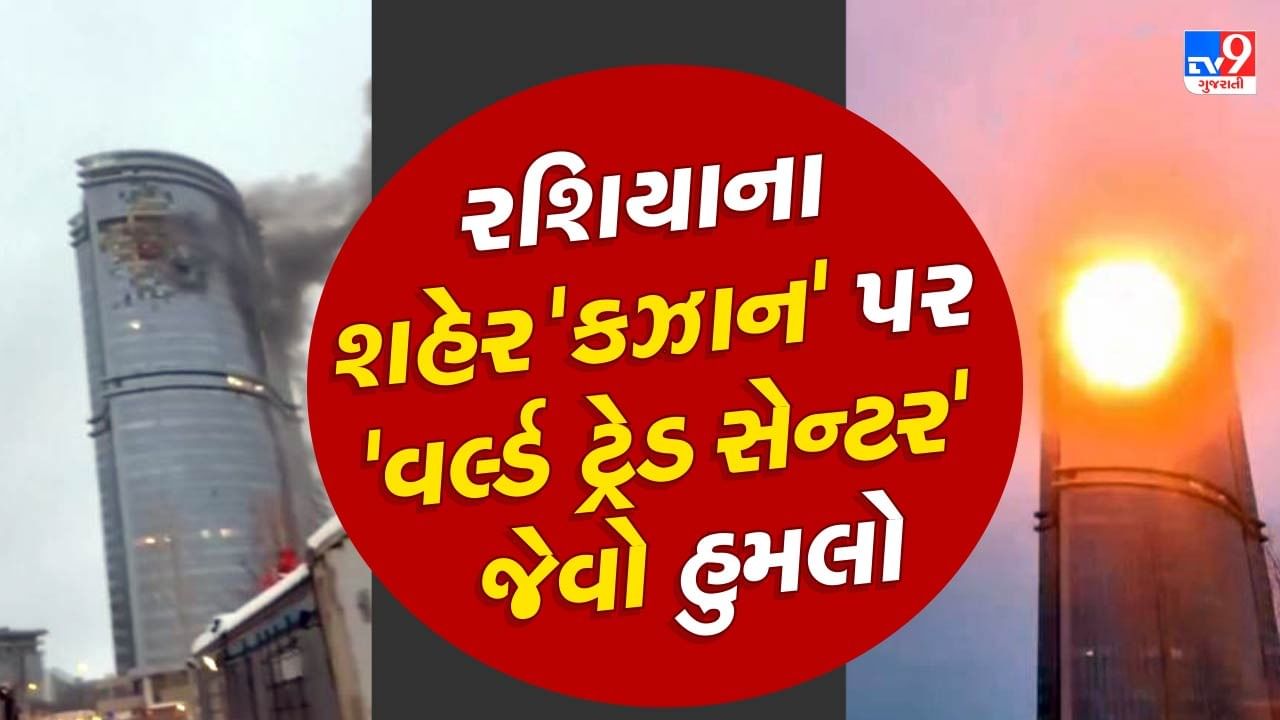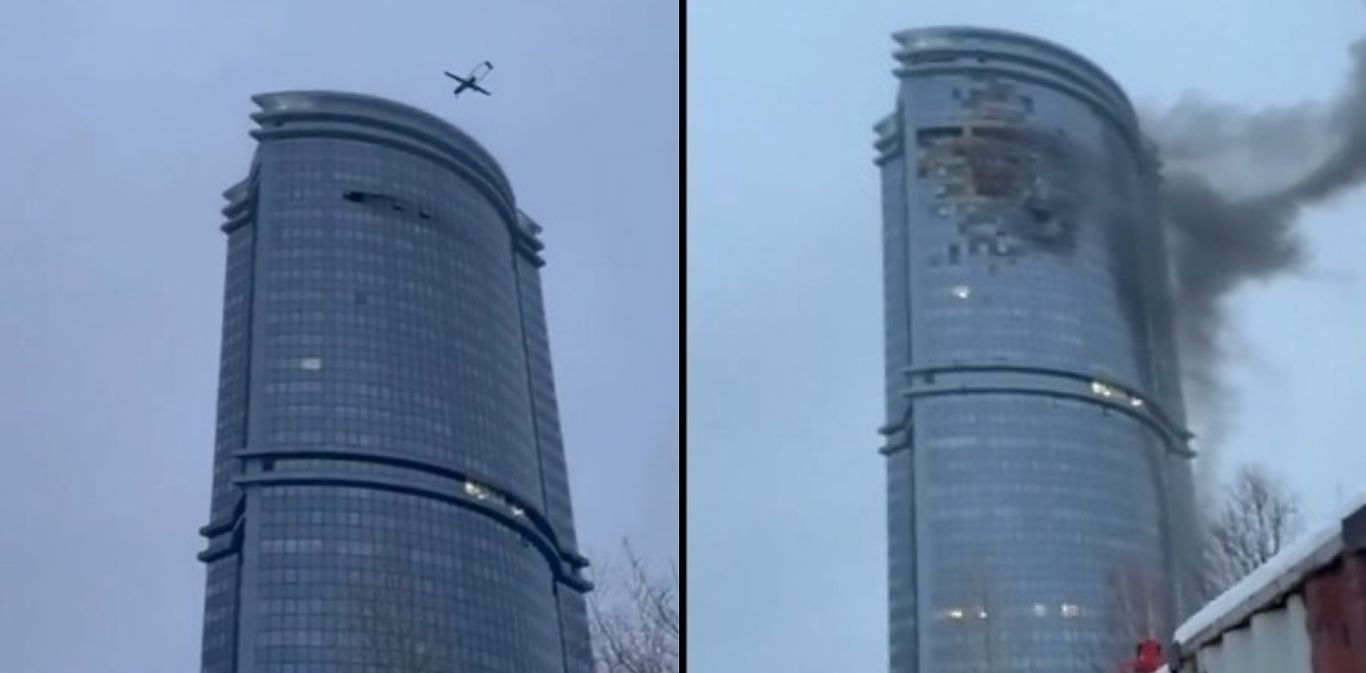Kazan drone attack thrusts a critical examination of modern warfare into the spotlight. This incident, shrouded in uncertainty and raising significant geopolitical questions, demands a thorough investigation into the technological capabilities employed, the potential motives behind the act, and the broader implications for regional stability. We delve into the specifics of the attack, exploring the types of drones possibly used, their navigation systems, and the vulnerabilities exploited.
The analysis extends to the geopolitical context, considering the strategic importance of Kazan and the potential ramifications for international relations.
This exploration includes an examination of the responses from various governments and international organizations, along with an assessment of the current security measures in place and potential improvements. We also consider the public perception and media coverage of the event, analyzing the narrative presented by different outlets and the resulting public sentiment. By piecing together these various facets, we aim to offer a comprehensive understanding of this significant event.
The Kazan Drone Attack: An Analysis
Reports of a drone attack on Kazan, a significant city in Russia, have raised concerns about regional security and the evolving threat of unmanned aerial vehicles (UAVs) in modern warfare. This analysis delves into the event, its technological aspects, geopolitical implications, security measures, and the media’s portrayal, providing a comprehensive overview of this significant incident.
The Kazan Drone Attack Overview
The alleged drone attack on Kazan involved multiple unmanned aerial vehicles targeting various locations within the city. While official details remain limited, initial reports suggested some damage to property, but casualty figures remain unclear or disputed. No group has definitively claimed responsibility for the incident. The timeline of events is still emerging, with conflicting reports and a lack of official confirmation on several key details.
The recent drone attack on Kazan highlights the evolving nature of modern warfare. It’s a stark contrast to the festive cheer associated with the NORAD Santa Tracker phone number , a tradition that embodies global cooperation and peace. However, both events underscore the importance of technological advancements and their potential for both constructive and destructive purposes, leaving us to contemplate the complexities of our interconnected world in the wake of the Kazan incident.
Further investigation is needed to establish the precise sequence of events and the extent of the damage.
| Date | Time | Location | Event Description |
|---|---|---|---|
| [Date of Initial Report] | [Time of Initial Report] | [Location of First Reported Incident] | Initial reports of drone activity near [Location]. |
| [Date of Subsequent Reports] | [Time of Subsequent Reports] | [Location of Subsequent Reported Incidents] | Further reports of drone sightings and potential impacts in various locations. |
| [Date of Official Statement (if any)] | [Time of Official Statement (if any)] | [Source of Official Statement (if any)] | Official statement regarding the incident (if available). |
| [Date of Latest Update] | [Time of Latest Update] | [Source of Latest Update] | Summary of latest information and ongoing investigations. |
Technological Aspects of the Attack
Determining the exact type of drones involved requires further investigation. However, based on reports, the drones likely possessed a relatively long range to reach Kazan, a considerable payload capacity to cause reported damage, and sophisticated navigation systems to evade detection and achieve their targets. The potential methods for navigation could have included GPS, inertial navigation systems, or even more advanced autonomous flight capabilities using AI-based path planning.
Vulnerabilities exploited might include gaps in air defense systems or weaknesses in civilian infrastructure security.
This attack bears some resemblance to other drone attacks globally, such as those seen in Ukraine, where various drone models, from commercially available UAVs modified for military use to purpose-built combat drones, have been deployed. However, the specifics of the Kazan incident—the types of drones used, the targeting methods, and the level of sophistication—require further analysis to draw definitive comparisons.
The recent Kazan drone attack highlights the increasing vulnerability of civilian areas to unmanned aerial vehicles. This incident prompts reflection on the potential for similar mishaps, even in seemingly controlled environments, such as the unfortunate orlando drone show malfunction , which underscores the importance of robust safety protocols. Ultimately, the Kazan attack serves as a stark reminder of the need for advanced drone defense systems worldwide.
A hypothetical drone used in such an attack might be a quadcopter with a wingspan of approximately 1.5 meters, capable of carrying a 5kg payload of explosives. It could be equipped with a high-resolution camera for targeting and advanced GPS/INS navigation for precision strikes. Its flight time could range from 30 to 60 minutes depending on payload and wind conditions.
Geopolitical Context and Implications, Kazan drone attack

Kazan’s location as a major city in Tatarstan, a republic within Russia, gives it significant geopolitical importance. The attack could be interpreted in the context of regional tensions, though definitive attribution remains elusive. Potential motives could range from expressing dissent against the Russian government to demonstrating technological capabilities by a hostile actor. The implications for regional stability are significant, potentially leading to increased security measures and heightened tensions within the region.
International responses have been varied, with some nations expressing concern and calling for restraint, while others await further information before commenting. A potential escalation scenario could involve further attacks or retaliatory actions, while de-escalation could occur through diplomatic efforts and investigations into the incident.
Security and Countermeasures

Existing security measures in Kazan, like air defense systems and surveillance technologies, appear to have been insufficient to prevent this attack, highlighting the need for enhanced security protocols. Defending against drone attacks presents significant challenges, including the relatively low cost and accessibility of drones, their ability to operate silently, and the difficulty in detecting and intercepting them.
The recent drone attack on Kazan highlights the growing concern over civilian drone usage. Understanding the technology behind these attacks is crucial, and researching companies like Sky Elements Drones, whose innovative technology can be found at sky elements drones , provides valuable insight. This knowledge can inform strategies for better drone detection and defense systems to mitigate future attacks like the one in Kazan.
- Improved drone detection systems, including radar, acoustic sensors, and AI-powered visual detection.
- Development of effective counter-drone technologies, such as jamming systems, net-guns, and directed energy weapons.
- Strengthened air defense systems to provide a multi-layered defense against aerial threats.
- Enhanced surveillance and intelligence gathering to identify potential threats and prevent attacks.
- Implementation of stricter regulations on drone ownership and operation.
- Improved collaboration and information sharing between security agencies.
Public Perception and Media Coverage

Media coverage of the Kazan drone attack has varied significantly, with some outlets focusing on the potential damage and security implications, while others emphasized the lack of clear attribution and the ongoing investigation. Public reaction has ranged from concern and fear to skepticism and speculation. Differences in media coverage reflect varying political leanings and perspectives, potentially influencing public opinion and political discourse.
A hypothetical news report might headline: “Kazan Drone Incident Underscores Growing UAV Threat: Investigation Underway.” The report would emphasize the need for improved security measures, the ongoing investigation to determine responsibility, and the potential implications for regional stability, while maintaining a neutral and factual tone.
The Kazan drone attack serves as a stark reminder of the evolving nature of conflict and the challenges of maintaining security in an increasingly interconnected world. The incident highlights the need for improved drone defense technologies and enhanced international cooperation to prevent future attacks. Further investigation into the specifics of the attack, including the identification of perpetrators and motives, is crucial to understanding the full implications of this event and preventing similar occurrences.
The analysis presented here provides a foundation for continued discussion and further research into this critical issue.
FAQ Guide
What was the reported damage from the Kazan drone attack?
Reports varied, but some sources indicated damage to infrastructure, though the extent remains unclear pending official investigation.
Were there any casualties reported?
Initial reports suggested no casualties, but this information remains unconfirmed pending official reports.
What type of drones are suspected to have been used?
This information is currently unknown and under investigation. Speculation ranges from commercially available drones to more sophisticated military-grade UAVs.
What is Kazan’s strategic importance?
Kazan is a major city in Russia, serving as a significant economic and cultural center. Its location also holds strategic importance within the country’s broader geopolitical context.
